#s1000d data module code
Explore tagged Tumblr posts
Text
S1000d Software Working Process - Code and Pixels
A new buzzword in the technical publishing world. New word? Not exactly new, but surely it’s a new word in the Indian Defense Technical Publishing segment.
S1000D is an Interactive Electronic Technical Publishing(IETP). It’s also called #ietm too.
S1000d is not new but very few Indian companies, which support documentation of foreign Airline documentation are similar to #S1000d word. But almost 90 % of the people who do S1000D conversation do not know what s1000d is.
#s1000d#s1000d benefits of xml#s1000d data module code#s1000d ietm#s1000d infographics#s1000d software#s1000d standard for technical publications#s1000d working process#s1000d basic principle#what is s1000d#s1000d ietm ietp#benefits of s1000d#s1000d standard pdf#s1000d pdf#s1000d download#s1000d example#s1000d chapters#s1000d explained#why s1000d#Electronic Technical Manuals#Hyderabad IETM developers#IETM#IETM vendors#IETM Designers#IETM Designing#companies of Hyderabad#IETM Development#e-content#IETM Development In India#IETM Framework
2 notes
·
View notes
Text
S1000D | Why Do We Need it and How Does it Work | Code and Pixels
S1000D is A new buzz word in the technical publishing world. New word? Not exactly new, but surely it’s a new word in Indian Defence Technical Publishing segment.

What is S1000D
S1000D is an Interactive Electronic Technical Publishing IETP. Of course, it’s also called IETM too.
S1000d is not new but very few Indian companies, which support documentation of foreign Airline documentation are similar to S1000d word. But almost 90% of the people who do S1000d conversation don’t know what S1000d is.
Few tools available in the market which are used to make XML files But they are not an IETM creating tool, Just XML conversion tools. After converting to XML, they send to foreign airlines company, where they foreign airline companies plug-in theses XML into their S1000d suits.
S1000D History In Brief
A few years back S1000d is mainly used in the Aerospace segment, because S1000d is basically governed by Steering Committee formed by ASD, Aerospace Industries Association of America (AIA) ATA e-Business Program These organizations form the S1000D Council Hence, it’s more apt for the Aerospace industry.
Currently, Defense systems – including land, sea, and air products, civil aviation, Ship industry of the US have adopted these standards while making documentation.
youtube
Adoption of S1000D
Now Indian Defense system is also trying to adopt S1000D for their documentation activities. When Navy/IAF/Army wants S1000d IETM, it is implied that the navy has CSDB Suit /Local CSDB Server 20- 50 OEMs or Service providers will give S1000d data Modules of various systems and the Navy CSDB Local server will host them and monitor them and does the user management
If the navy does not have a CSDB suit then, still they can run IETM, but a standalone version where no user management will be done by IETM Viewer.(User management will be done by Navy CSDB Local server which hosts all the data modules of various OEMs)
Is S1000D suitable for Smaller Systems?
No. S1000D is not suitable for smaller systems. It’s very apt for the systems which have around 1 lakh pages of documentation and the project has just initiated the documentation.
One Of The Greatest Advantages Of S1000D IsIn JSS 0852 IETM, first, documentation has to be done in JSS 251 format, in MS word then IETM activity starts. In S1000D, Separate documentation need not be done. Whatever we do in MS word will be done using s1000d Author software.
Once all the documentation is done, We can simply export them either as PDF or as IETM or XML files with Project manifest file so that these can be deployed in any other S1000d distribution servers/ CSDB studios of navy
Do We Need s1000d?
Well, to be honest, the answer is Yes and NO. It depends on how big is your System/equipment.
S1000d mostly suits to airline industry where every part has a unique number may it be AIRBUS, BOEING BUSINESS JETS, BOMBARDIER AEROSPACE, CESSNA AIRCRAFT. Parts and part numbers are the same.
How Does S1000D Work?
In S1000d documentation, every part is developed as a standalone module/document (data Module). While delivering a document, they compile all data modules and deliver. And all these companies have their own S1000d suit which costs in crores.
youtube
S1000D SOFTWARE WORKING PROCESS
They maintain a centralized repository. They maintain their own software which takes care of publishing, document management.
In our context, it won’t suit our needs and purpose. To maintain s1000d, even Clients must have s 1000d CSDB Studio or Server, and all the s1000d publications supplied by various OEMs/ Vendors will sit in that CSDB Server
For that client has to share BREX, business rules to vendors, and guidelines to all vendors so that all the documents will sit properly in the client’s S1000d CSDB Server
This is needed when the system has around 2 lakhs of documents to share.And its commercially very costly solution. If, IETM costs you 20 lakhs then S1000d costs you 80 Lakhs.
If the system is very big, like documentation for the entire Ship /flight, and documentation has just been initiated, then S1000D is the best solution. Because One S1000d is made, then we can export PDFs and also IETM from the same source files.
The Major Advantage Of S1000D
let’s say each ship is built by has 100 OEMs and all 100 OEMs supply IETMS in different formats, then it will be difficult to maintain uniformity.
If all 100 vendors give navy s1000d IETMs then all the IETMs will almost in a similar format.
To achieve this, the Navy must have an S1000d CSDB server with them to host all OEMs received by various vendors.
If the Navy does not have an S1000d CSDB Server with them, then the purpose and benefits of S1000d cant be achieved

Why CODE AND PIXELS for S1000D?
For the past 7 years, we have been executing IETM projects for Army, Navy, and Air-force in JSG 0852 format.
In 2018, the first time we received an enquiry from a Dubai-based oil and gas firm. We have also come across the s1000d term in various Navy documentation meetings. we have then initiated R&D activities on S1000D Implementation and hired S1000d experts who have worked on various defense Aerospace projects.
we have interviewed 50 members who mentioned s1000d in their profiles. We picked them from LinkedIn. They don’t even know what s1000d is. They were told that the project was s1000d, and they blindly did data entry work on the conversion of word to XML.
We initially tried to develop software for S1000d. We later realised that S1000d is not just making Doc files into XML files. It has thousands of standards of XML tags as mentioned by S1000d documentation. We have searched for an organisation that is already an expert in delivering S1000d solutions. After almost 6 months of evolution, we have done a technical tie-up with one of the best s1000d service provider company. (US-based firm); We have executed projects in S1000d successfully.

#s1000d#why s1000d#s1000d example#what is s1000d#s1000d ietm#s1000d software#benefits of s1000d#Youtube
1 note
·
View note
Text
Interactive Electronic Technical Manual (IETM) JSG 0852 & S1000D
Code and Pixels Introduction
Code and Pixels Interactive Technologies Private Limited (CNP) is an IETM service provider based in Hyderabad (India).
IETM Services
We have extensive experience in execution of IETMs (INDIAN STANDARD IETM JSG 0852:2001, LEVELS 3,4,5 and European Aviation Standard IETM S1000D, lEVEL4)
Code and Pixels Clients
Partnering with the best to deliver exceptional Quality & Value. We are proud to work with Indian Defence (Army, Navy, and IAF).
Welcome to Code and Pixels
Code and Pixels is the best among the top software development companies in Hyderabad, India. Code and Pixels Interactive Technologies Private Limited (CNP) is an IT service provider based in Hyderabad (India). We provide end-to-end IETM solutions, specialized in the innovative use of technology.
We confidently manage large and complex projects without slipping on delivery deadlines while maintaining the highest standards of quality and efficiency.
Technical Documentation Services
Code and Pixels is the only Company, delivered 50 plus IETMs (Class 3, Class 4, and 5) to Indian defense and many corporates i.e. Tata, L&T, Nova, and Defense labs such as DRDL, RCI, ASL, BDL, ECIL, BEL, and many OEMs.
We assure you that we will deliver IETM as per the end-users expectations adhering to all the standards. We have worked in association with the Naval Technical Group of Navy and also with eMMS team of the Indian Air force and MAG (DRDL) of the Indian Army.
Our experience in delivering 50 Plus projects of IETM will definitely give an edge to your product. We have come across all the hurdles in Project Implementing. IETM looks simple but it has so many challenges while implementing and getting approvals from the client.
Having vast experience, we assure you that we will be your trusted technology partners in delivering IETMs.
Registered with
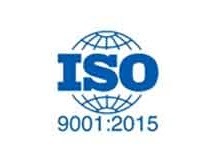
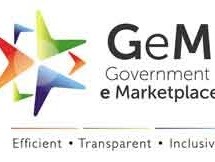
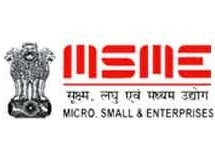
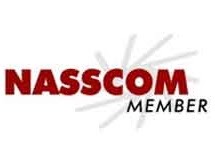
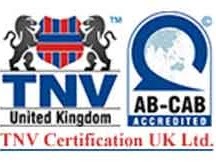
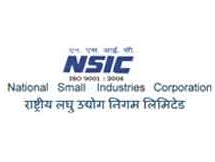
Almost for all the Defense labs and production agencies, we have designed, developed, and installed Interactive Electronic Technical Manual, or Electronic Technical Manual OR Technical Publications (IETP). All these terms refer to IETM Documentations.
We are proud to deliver ARMY IETMs, NAVY IETMs, and Air force IETMs in various cities of INDIA.
We have executed the IETM and CBT projects of OEMs having production centers pan INDIA, in Hyderabad(DRDO, ASL, RCI, BDL, ECIL, BEL) Vishakapatnam, Vizag(HSL), Chennai, Coimbatore, Tamilnadu (ADU, APTARA), Maharashtra, Mumbai(L&T, TATA), Pune(L&T, TATA, Kirloskar), Delhi (SBI, GNU, GIZ, NTPC), Cochin (TIL), Goa(Marine electrical), Kolkata(TIL, Kolkatta University), Bhopal, Utter Pradesh, Lucknow, Noida(SBI, UGC), Gujarat, Surat (PIRAMAL, ANSA DECO), Gandhi Nagar (BOB, INFLIBNET), Kerala, Trivandrum, Bangalore(BEL, Canara Bank, TALLY), Pondicherry(Integra), Gopalpur Cantonment, Odisha (Army AD College).
Proud to be associated with OEMs supplying defense equipment for ARMY, NAVY, and AIR FORCE.
We have developed IETM Framework using open source software hence, no proprietary or licensed software is required to play IETM Viewer, either in Windows Operating systems or in Linux Operating system. The installation process is also very simple and these electronic manuals can be viewed using all the major browsers and all the standard devices i.e. mobiles, tabs, and different size monitors, etc.
Download IETM presentation having information such as “IETM Architecture”, “How to create”, “IETM format”, “S1000D standard”, “Information code list” and about “data module DM” and naming, etc from “download presentations” section of this web site. We have expertise in developing IETM in Indian Defense standard JSG 0852 or European aviation standard S1000D.
We are not JUST a Vendor or Service Provider or S1000D Developers or IETM software developers but we are your trusted partner in the execution of the projects.
Ask for a Live Demo and walkthrough of the IETM software and get the Best quotation to execute the project – [email protected] or call 09849527706
We need information i.e.
how many pages are to be converted (It means what is the volume or page count of all the manuals which you have prepared).
What is the standard asked for? Indian Standard or S1000D?
About Company
Code and Pixels Interactive Technologies Private Limited (CNP) is an IT service provider based in Hyderabad (India).
Get in touch
09849527706
#IETM#S1000D#Code and Pixels#IETM Hyderabad#Interactive Electronic Technical Manual#What is Ietm Level 4#What is Ietm#Ietm Software#Ietm Developement
3 notes
·
View notes
Text
S1000D Infographics |Code And Pixels
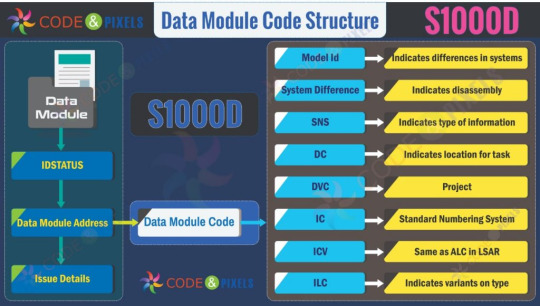
S1000D is an Interactive Electronic Technical Publishing IETP. It’s also called IETM too. Which are classified as Level 1, Level 2, Level 3, Level 4 and Level 5. IETM is the replacement of paper work which is equivalent for a paper- based presentation.

What is S1000d and Working Process
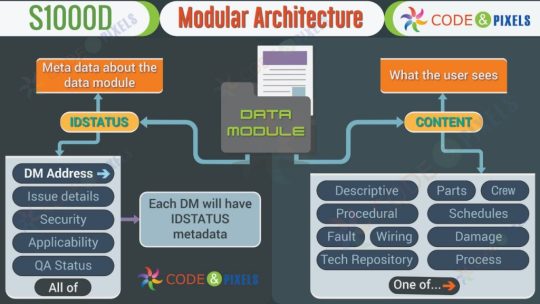
S1000d Specifications

S1000d Software Working Process
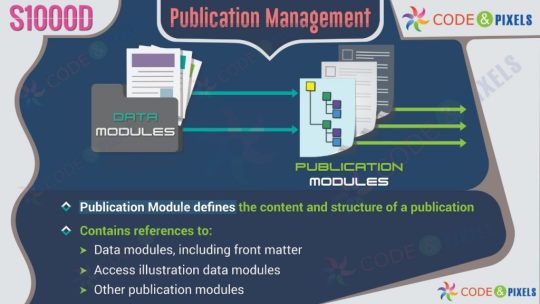
S1000d Publication Management

S1000d Process Flow Chart

S1000D Data Module Code Structure

S1000D Benefits of XML

Need Of S1000d
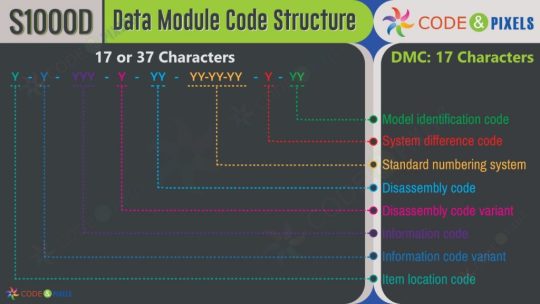
Data Module Code Structure Of S1000D

Benefits of XML S1000D
#IETM Developement#S1000D Developers#What is S1000D#elearning#s1000d#IETM#IETP#technical documentation
3 notes
·
View notes
Text
S1000D: Defined, Explained, and Explored

What is S1000D?
S1000D is the European standard of technical publications or technical documentation being followed in Aerospace since 1980, which uses CSDB, a Common source database which is used for preparing, managing, and publishing technical information for a warship, or Aerospace, or even Civil airlines too.
The first release of the S1000D Specification was in 1989 and in August 2019 the latest 5 Issue was release
An airplane or ship is built with thousands of components, sub-components and navigation equipment, and many more. Hence, these components are supplied by many OEMs (Original equipment manufacturers). OEMs make the documents to their own standards. Each document and format is entirely different because all OEMs don’t maintain similar standards. At that point, the Technical Publications Specification Maintenance Group (TPSMG) was formed. They proposed a DM-based (Data Module) Based structure. TO manage these Data modules CSDB was maintained. (Database). Data Module is the standalone section of the document. For example, let’s assume that one data module is prepared on Operation of GPS and stored in CSDB, then whenever GPS operations are to be reproduced for different aircraft or different systems, simply that Data module can be copied and plugged.
In short, re-usability and the format used is XML, and tags are defined by the S1000D steering committee.
S1000D Basic Principle
Content or data produced following the standard is in Data Module
This data module is the smallest and self-contained content or data unit within a technical publication
A data module must have sense and meaning when viewed without any supporting data other than images and diagrams
These data modules will be stored and managed in CSDB, Common Source Database.
Using this CSDB we can publish output in a page-oriented or Interactive Electronic Technical Manual.
These Individual data modules are re-usable components and can be used repeatedly in an output.
Benefits of S1000D
Re-usability of data hence reduces production cost
Standardization of data and naming conventions
Open source and non-proprietary
Good for legacy data conversion
Proper documentation and version control management
Zero printing cost and zero occupancies of space as no Hard copies are to be maintained. Achieved by reusing instead of recreating information each time it is required
Easily to maintain and distribute: Facilitates transfer of information and electronic output between systems very easily and conveniently
Multiple Vendor support
Fastest reference to operator or maintainer than traditional paper-based documents
Many different output forms can be generated from a single data source i.e. from CSDB we can generate IETM and also PDF format which can be used for printing if need be
Customized Output creation: Allows sub-sets of information to be generated to meet specific user needs and user levels.

S1000D USERS
Military
Air
Land
Maritime
International
Civil/commercial
Aviation
Shipping
Space
Urban
General technology
Others:
Manufacturer
Integrator
Supplier
Suppliers of documentation
Technical service providers
Software vendors
Common information sets provide following data: –
Crew/Operator information
Description and operation
Maintenance information
Wiring data
Illustrated Part Data (IPD)
Maintenance planning information
Mass and balance information
Recovery information
Equipment information
Weapon loading information –
Cargo loading information
Stores loading information
Role change information
Battle damage assessment and repair information
Illustrated tool and support equipment data
Service bulletins
Material data
Common information and data
Training
List of applicable publications
Maintenance checklists and inspections

S1000D Development with Code and Pixels

Having 8 years of experience in handling technical documentation, especially for defense, code and pixels has gained good knowledge on S1000D IETM development
Code and Pixels is associated with US based company in designing and development of S1000d documentation.
Code and pixels has well trained 50 + resources to handle S1000d projects.
3 notes
·
View notes
Text
S1000D | Code and Pixels Interactive Technologies Pvt Ltd
S1000D is the European standard for Interactive Electronic Technical publication or technical manual. Code and Pixels is the pioneer in designing S1000D based IETM/IETPs
Code and Pixels is Pioneer in designing and developing of IETMs. Code and pixels are the only company in Hyderabad having strong R&D team exclusively for IETM Interactive Electronic Technical Publication or S1000D is the European standard.
What is S1000D?
S1000D is the European standard of technical publications or technical documentation being followed in Aerospace since 1980, which uses CSDB, a Common source database which is used for preparing, managing, and publishing technical information for a warship, or Aerospace, or even Civil airlines too.
The first release of the S1000D Specification was in 1989 and in August 2019 the latest 5 Issue was release
An airplane or ship is built with thousands of components, sub-components and navigation equipment, and many more. Hence, these components are supplied by many OEMs (Original equipment manufacturers). OEMs make the documents to their own standards. Each document and format is entirely different because all OEMs don’t maintain similar standards. At that point, the Technical Publications Specification Maintenance Group (TPSMG) was formed. They proposed a DM-based (Data Module) Based structure. TO manage these Data modules CSDB was maintained. (Database). Data Module is the standalone section of the document. For example, let’s assume that one data module is prepared on Operation of GPS and stored in CSDB, then whenever GPS operations are to be reproduced for different aircraft or different systems, simply that Data module can be copied and plugged.
In short, re-usability and the format used is XML, and tags are defined by the S1000D steering committee.
S1000D Basic Principle
Content or data produced following the standard is in Data Module
This data module is the smallest and self-contained content or data unit within a technical publication
A data module must have sense and meaning when viewed without any supporting data other than images and diagrams
These data modules will be stored and managed in CSDB, Common Source Database.
Using this CSDB we can publish output in a page-oriented or Interactive Electronic Technical Manual.
These Individual data modules are re-usable components and can be used repeatedly in an output.
Benefits of S1000D
Re-usability of data hence reduces production cost
Standardization of data and naming conventions
Open source and non-proprietary
Good for legacy data conversion
Proper documentation and version control management
Zero printing cost and zero occupancies of space as no Hard copies are to be maintained. Achieved by reusing instead of recreating information each time it is required
Easily to maintain and distribute: Facilitates transfer of information and electronic output between systems very easily and conveniently
Multiple Vendor support
Fastest reference to operator or maintainer than traditional paper-based documents
Many different output forms can be generated from a single data source i.e., from CSDB we can generate IETM and also PDF format which can be used for printing if need be
Customized Output creation: Allows sub-sets of information to be generated to meet specific user needs and user levels.
JSG 0852:2001 & S1000D
S1000D USERS
· Military
· Air
· Land
· Maritime
· International
· Civil/commercial
· Aviation
· Shipping
· Space
· Urban
· General technology
Others:
· Manufacturer
· Integrator
· Supplier
· Suppliers of documentation
· Technical service providers
· Software vendors
Common information sets provide following data: –
· Crew/Operator information
· Description and operation
· Maintenance information
· Wiring data
· Illustrated Part Data (IPD)
· Maintenance planning information
· Mass and balance information
· Recovery information
· Equipment information
· Weapon loading information –
· Cargo loading information
· Stores loading information
· Role change information
· Battle damage assessment and repair information
· Illustrated tool and support equipment data
· Service bulletins
· Material data
· Common information and data
· Training
· List of applicable publications
· Maintenance checklists and inspections
S1000D
S1000D Development with Code and Pixels
· Having 8 years of experience in handling technical documentation, especially for defense, code and pixels has gained good knowledge on S1000D IETM development
· Code and Pixels is associated with US based company in designing and development of S1000d documentation.
· Code and pixels has well trained 50 + resources to handle S1000d projects.
0 notes
Text
S1000D Data Conversion Services
Data conversion is an important consideration for any organization. Don’t retype all of your legacy data, when you can automate conversion from its current format into S1000D Data Modules. Code and Pixels Interactive Technologies Private Limited (CNP) is an IT service provider based in Hyderabad (India). We provide end-to-end Software development and IETMs (INDIAN STANDARD IETM JSG 0852:2001, LEVELS 3,4,5 and European Aviation Standard IETM S1000D, Class 4), specialized in innovative use of technology. Contact us today!
0 notes
Text
S1000D: Defined,Explained,Explored

What is S1000D?
S1000D is the European standard of technical publications or technical documentation being followed in Aerospace since 1980, which uses CSDB, a Common source database which is used for preparing, managing, and publishing technical information for a warship, or Aerospace, or even Civil airlines too.
The first release of the S1000D Specification was in 1989 and in August 2019 the latest 5 Issue was release
An airplane or ship is built with thousands of components, sub-components and navigation equipment, and many more. Hence, these components are supplied by many OEMs (Original equipment manufacturers). OEMs make the documents to their own standards. Each document and format is entirely different because all OEMs don’t maintain similar standards. At that point, the Technical Publications Specification Maintenance Group (TPSMG) was formed. They proposed a DM-based (Data Module) Based structure. TO manage these Data modules CSDB was maintained. (Database). Data Module is the standalone section of the document. For example, let’s assume that one data module is prepared on Operation of GPS and stored in CSDB, then whenever GPS operations are to be reproduced for different aircraft or different systems, simply that Data module can be copied and plugged.
In short, re-usability and the format used is XML, and tags are defined by the S1000D steering committee.
S1000D Basic Principle
Content or data produced following the standard is in Data Module
This data module is the smallest and self-contained content or data unit within a technical publication
A data module must have sense and meaning when viewed without any supporting data other than images and diagrams
These data modules will be stored and managed in CSDB, Common Source Database.
Using this CSDB we can publish output in a page-oriented or Interactive Electronic Technical Manual.
These Individual data modules are re-usable components and can be used repeatedly in an output.
Benefits of S1000D
Re-usability of data hence reduces production cost
Standardization of data and naming conventions
Open source and non-proprietary
Good for legacy data conversion
Proper documentation and version control management
Zero printing cost and zero occupancies of space as no Hard copies are to be maintained. Achieved by reusing instead of recreating information each time it is required
Easily to maintain and distribute: Facilitates transfer of information and electronic output between systems very easily and conveniently
Multiple Vendor support
Fastest reference to operator or maintainer than traditional paper-based documents
Many different output forms can be generated from a single data source i.e. from CSDB we can generate IETM and also PDF format which can be used for printing if need be
Customized Output creation: Allows sub-sets of information to be generated to meet specific user needs and user levels.
📷JSG 0852:2001 & S1000DS1000D USERS
MilitaryAir Land Maritime International
Civil/commercialAviation Shipping Space Urban General technology
Others:
Manufacturer
Integrator
Supplier
Suppliers of documentation
Technical service providers
Software vendors
Common information sets provide following data: –
Crew/Operator information
Description and operation
Maintenance information
Wiring data
Illustrated Part Data (IPD)
Maintenance planning information
Mass and balance information
Recovery information
Equipment information
Weapon loading information –
Cargo loading information
Stores loading information
Role change information
Battle damage assessment and repair information
Illustrated tool and support equipment data
Service bulletins
Material data
Common information and data
Training
List of applicable publications
Maintenance checklists and inspections
📷S1000DS1000D Development with Code and Pixels
Having 8 years of experience in handling technical documentation, especially for defense, code and pixels has gained good knowledge on S1000D IETM development
Code and Pixels is associated with US based company in designing and development of S1000d documentation.
Code and pixels has well trained 50 + resources to handle S1000d projects.
📷
0 notes
Text
S1000D – Why Do We Need it and How Does it Work?
S1000D is A new buzz word in the technical publishing world. New word? Not exactly new, but surely it’s a new word in Indian Defence Technical Publishing segment.
What S1000D Means?
S1000D is an Interactive Electronic Technical Publishing IETP. Of course, it’s also called IETM too.
S1000d is not new but very few Indian companies, which support documentation of foreign Airline documentation are similar to S1000d word. But almost 90% of the people who do S1000d conversation do not know what S1000d is.
Few tools available in the market which are used to make XML files But they are not an IETM creating tool, Just XML conversion tools. After converting to XML, they send to foreign airlines company, where they foreign airline companies plug-in theses XML into their S1000d suits.
S1000D History In Brief
A few years back S1000d is mainly used in the Aerospace segment, because S1000d is basically governed by Steering Committee formed by ASD, Aerospace Industries Association of America (AIA) ATA e-Business Program These organizations form the S1000D Council Hence, it’s more apt for the Aerospace industry.
Currently, Defense systems – including land, sea, and air products, civil aviation, Ship industry of the US have adopted these standards while making documentation.
Adoption of S1000D
Now Indian Defense system is also trying to adopt S1000D for their documentation activities. When Navy/IAF/Army wants S1000d IETM, it is implied that the navy has CSDB Suit /Local CSDB Server 20- 50 OEMs or Service providers will give S1000d data Modules of various systems and the Navy CSDB Local server will host them and monitor them and does the user management
If the navy does not have a CSDB suit then, still they can run IETM, but a standalone version where no user management will be done by IETM Viewer.(User management will be done by Navy CSDB Local server which hosts all the data modules of various OEMs)
Is S1000D suitable for Smaller Systems?
No. S1000D is not suitable for smaller systems. It’s very apt for the systems which have around 1 lakh pages of documentation and the project has just initiated the documentation.
One Of The Greatest Advantages Of S1000D Is In JSS 0852 IETM, first, documentation has to be done in JSS 251 format, in MS word then IETM activity starts. In S1000D, Separate documentation need not be done. Whatever we do in MS word will be done using s1000d Author software.
Once all the documentation is done, We can simply export them either as PDF or as IETM or XML files with Project manifest file so that these can be deployed in any other S1000d distribution servers/ CSDB studios of navy
Do We Need s1000d?
Well, to be honest, the answer is Yes and NO. It depends on how big is your System/equipment.
S1000d mostly suits to airline industry where every part has a unique number may it be AIRBUS, BOEING BUSINESS JETS, BOMBARDIER AEROSPACE, CESSNA AIRCRAFT. Parts and part numbers are the same.
How Does S1000D Work?
In S1000d documentation, every part is developed as a standalone module/document (data Module). While delivering a document, they compile all data modules and deliver. And all these companies have their own S1000d suit which costs in crores.
They maintain a centralized repository. They maintain their own software which takes care of publishing, document management.
In our context, it won’t suit our needs and purpose. To maintain s1000d, even Clients must have s 1000d CSDB Studio or Server, and all the s1000d publications supplied by various OEMs/ Vendors will sit in that CSDB Server
For that client has to share BREX, business rules to vendors, and guidelines to all vendors so that all the documents will sit properly in the client’s S1000d CSDB Server
This is needed when the system has around 2 lakhs of documents to share.And its commercially very costly solution. If, IETM costs you 20 lakhs then S1000d costs you 80 Lakhs.
If the system is very big, like documentation for the entire Ship /flight, and documentation has just been initiated, then S1000D is the best solution. Because One S1000d is made, then we can export PDFs and also IETM from the same source files.
The Major Advantage Of S1000D
let’s say each ship is built by has 100 OEMs and all 100 OEMs supply IETMS in different formats, then it will be difficult to maintain uniformity.
If all 100 vendors give navy s1000d IETMs then all the IETMs will almost in a similar format.
To achieve this, the Navy must have an S1000d CSDB server with them to host all OEMs received by various vendors.
If the Navy does not have an S1000d CSDB Server with them, then the purpose and benefits of S1000d cant be achieved


Why CODE AND PIXELS for S1000D?
For the past 7 years, we have been executing IETM projects for Army, Navy, and Air-force in JSG 0852 format.
In 2018, the first time we received an enquiry from a Dubai-based oil and gas firm. We have also come across the s1000d term in various Navy documentation meetings. we have then initiated R&D activities on S1000D Implementation and hired S1000d experts who have worked on various defense Aerospace projects.
we have interviewed 50 members who mentioned s1000d in their profiles. We picked them from LinkedIn. They don’t even know what s1000d is. They were told that the project was s1000d, and they blindly did data entry work on the conversion of word to XML.
We initially tried to develop software for S1000d. We later realised that S1000d is not just making Doc files into XML files. It has thousands of standards of XML tags as mentioned by S1000d documentation. We have searched for an organisation that is already an expert in delivering S1000d solutions. After almost 6 months of evolution, we have done a technical tie-up with one of the best s1000d service provider company. (US-based firm); We have executed projects in S1000d successfully.
1 note
·
View note
Text
What is S1000D | Code And Pixels
The S1000D specification requires a document to be broken down into individual data items (called Data Modules) which can be marked with individual XML labels and metadata, and be part of a hierarchical XML structure. This permits the updating of single data items without necessarily changing the path down the XML tree which points to them.
#s1000d#s1000dbenefitsofxml#s1000ddatamodulecode#s1000dietm#s1000dinfographics#s1000dsoftware#s1000dbasicprinciple#whatiss1000d#ietmlevel4#ietm#software#technology
1 note
·
View note
Text
Introduction to IETM and IETP (JSG-0852 and S1000D)

Technical manuals (e.g. maintenance, user, training, operations, etc.) published in electronic format are becoming more and more popular than paper-based manuals for their interactivity, convenience, and ease of use.
For example, the maintenance and operation manuals of a warship, which used to occupy 300 -350 sq. feet of prime area with thousands of pages of technical literature
It is difficult to refer to some operating process or troubleshooting from thousands of hardcopies
To address these issues IETMs were introduced
IETMs are a portable, electronic “library” that contains thousands of pages of documentation and images, Videos, and allows end-users to trace technical documentation in a more efficient manner, and the digital nature provides a more agile and accurate method of updating technical documentation.
• Level 0 :- Scanned Image / Digital format
• Level 1: Simple PDF with multiple pages
• Level 2: PDF with hyperlinks to index along with Images.
• Level 3: HTML-based pages, similar to a website, where all the content is presented HTML pages along with a Table of content at onside. Linear format following the logic of the content. Next previous buttons with very limited search functionality
• Level 4: Advanced IETM with database, and user management, Powerful search and Content, and Document management facility.
There are two specifications/standards that exist.
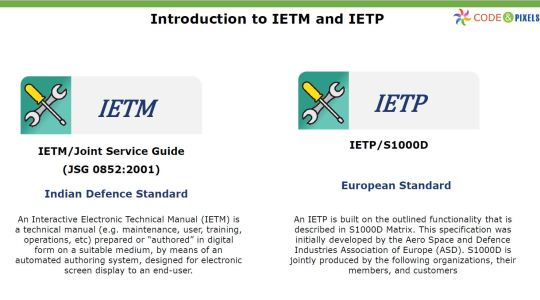
IETM — (JSG 0852:2001)
Standards are Designed and Developed by the Directorate of Standardization Department of Defense Production. Ministry of Defense, New Delhi
Guidelines Framed by:
Stakeholders and steering committee:
Army, Navy, Air force, Scientist of Defense labs, Capt., Lt. Cdr from various organizations
Labs: BEL, ADG systems, NHQ, ACAS, HAL, BDL, GRSE, Goa Shipyard, MIDHANI, MDL, BEML, DQAL, Dte Standardization, CQA, DS cell Bangalore, etc.
IETP — S1000D
Stakeholders and steering committee:
Jointly produced by Aerospace and Defense Industries Association of Europe (ASD), Aerospace Industries Association of America (AIA), and ATA e-Business Program.
JSG — 0852: 20001
1. Needs Raw content to covert to SQL Database
2. HTML/SGML as source file
3. IETM has an inbuilt Authoring tool, Content management tool, User Management, and reporting
4. Works in Standalone and Client-server mode
5. IETM has Viewer and Administrator and Author Modules
6. Content can be edited by OEM without any tool
7. In short, OEM need not have any software to deploy IETM.
S1000D
Needs Raw content to covert to XML Database
XML as a source file
OEM or the place IETM is being deployed must have a CSDB webserver to host the Data Modules/ s1000d XML files to have user management and content management.
The vendor gives s1000d files to OEM. If OEM has a CSDB studio server then IETP can be hosted on that server. Otherwise, it plays in a standalone machine as a Viewer.
OEM needs an S1000d author tool, commercially available off-the-shelf software to edit.
OEM must have an s1000d CSDB server to deploy s1000d files. If no CSDB Server is available then S1000d can still be viewed in Viewer without any Administration tools.
Common Source DataBase — CSDB
In S1000D Documentation, 2 software’s are used
Authoring Tool:
• It is like in simple words, MS word, where we write the content and put images, etc.
• IN MS word its .doc file, in S1000D, it’s XML Data Module.
• In this authoring tools we need to write content in S1000d defined XML Tags, so that all the documents designed by all the OEMs will be in the same lines across the globe.
CSDB SERVER
• This is server software that stores all the databases and also tracks versions and manages Data modules
• S1000D needs some codes so that every Data Module has a unique code.
• CSDB server creates these unique codes automatically.
• Helps in publishing IETMs, PDFs, and Source XML files
Major advantage of s1000d
• Let’s say each ship is built by has 50 OEMs and all 50 OEMs supply IETMS in different formats, then it will be difficult to maintain uniformity.
• If all 50 vendors give the end-user s1000d IETMs then all the IETMs will almost in a similar format.
• To achieve this, the end-user must have an S1000d CSDB server with them to host all the files received by various vendors.
• If Navy/IAF/Army do not have CSDB suit then, still they can run IETM, but a standalone version where no user management will be done by IETM Viewer.
• (User management will be done by end-users CSDB Local server which hosts all the data modules of various OEMs)
S1000D and its basic principle
Content or data produced following the standard is in Data Module
This data module is the smallest and self-contained content or data unit within a technical publication
A data module must have sense and meaning when viewed without any supporting data other than images and diagrams
These data modules will be stored and managed in CSDB, Common Source Database
Using this CSDB we can publish output in a page-oriented or Interactive Electronic Technical Manual
These Individual data modules are re-usable components and can be used repeatedly in an output.
Benefits of S1000d?
One of the greatest advantages of S1000D is
In JSG 0852 IETM, first, documentation has to be done in JSS 251 format, in MS word then IETM activity starts.
In S1000D, Separate documentation need not be done. Whatever we do in MS word will be done using s1000d Author software.
Once all the documentation is done, we can simply export them either as PDF or as IETM or XML files with Project manifest file so that these can be deployed in any other S1000d distribution servers/ CSDB studios of the end-user (Navy/IAF/Army)
Reusability of data hence reduces production cost
Standardization of data and naming conventions
Open source and non-proprietary
Good for legacy data conversion
Proper documentation and version control management
Zero printing cost and zero occupancies of space as no Hard copies are to be maintained. Achieved by reusing instead of recreating information each time it is required
Easily to maintain and distribute: Facilitates transfer of information and electronic output between systems very easily and conveniently
Multiple Vendor support
Fastest reference to operator or maintainer than traditional paper-based documents
Many different output forms can be generated from a single data source i.e. from CSDB we can generate IETM and also PDF format which can be used for printing if need be
Customized Output creation: Allows sub-sets of information to be generated to meet specific user needs and user levels.
Common information sets provide the following data: -
Crew/Operator information
Description and operation
Maintenance information
Wiring data
Illustrated Part Data (IPD)
Maintenance planning information
Mass and balance information
Recovery information
Equipment information
Weapon loading information –
Cargo loading information
Stores loading information
Role change information
Battle damage assessment and repair information
Illustrated tool and support equipment data
Service bulletins
Material data
Common information and data
Training
List of applicable publications
Maintenance checklists and inspections
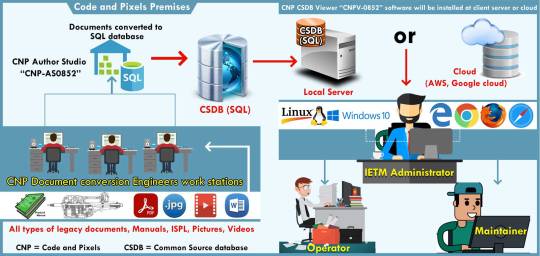
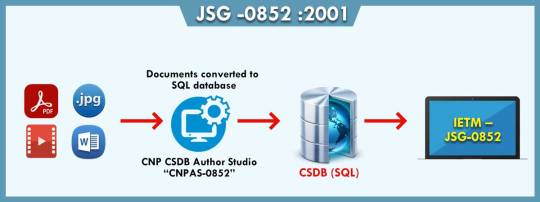
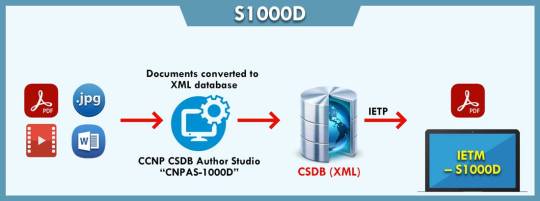
0 notes
Text
What Does The Difference Between IETM and IETP
It’s not confusion, it’s clarity. You are on the very right track. Understand the difference between IETM and IETM.
Let’s not get confused any anymore again with the technical Jargon's. Let us come straight to the point.
If it is JSG 0852 :2007 then it’s IETM
If it is s1000d then it’s IETP.
Now without understanding the need fully, few OEMs and Labs are asking for s1000d IETM.
“Internet Says s1000d is the latest standard of documentation, hence then we should adopt that” this is a blind concept adopted by few.
“Now Wikipedia says Level -5 is the latest version of IETM, hence now all the OEMs and Labs wants LEVEL -5 IETM.”
Regarding Level -5 IETM whatever Wikipedia says all the vendors and IETM service providers have copy-pasted or changed the language and claiming to do IETM Level-5.
Actually, Level 5 deals with advanced key word search and artificial intelligence, which is not required at this point and it’s too costly to implement too.
Coffee or TEA? Select one (JSG or s1000d)
If your RFQ / SCOPE says IETM, then it has to be IETM developed as per JSG 0852: 2001 ONLY.S1000d is Not an IETM. It’s an IETP Interactive electronic Technical Publication and it is not as per JSG 0852:2001 standards.If your RFQ/Scope says IETM as per S 1000D AND JSG 0852:2001 Then ask your client to edit the specifications. Your client must have read over the internet and mixed the knowledge and prepared their SCOPE.
It is like a Coffee and TEA. You cannot make Coffee with Tea powder.
If someone is asking for IETM as per S1000D AND JSG 0852:2001 means, Coffee made with Tea powder and expecting to get Coffee aroma.
Either drink coffee or else drink TEA.
This means either go for JSG or S1000d
Now, the big question is do we really need s1000d?
Well, to be honest, not really.
S1000d mostly suits to airline industry where every part has a unique number may it be AIRBUS, BOEING BUSINESS JETS, BOMBARDIER AEROSPACE, CESSNA AIRCRAFT. Parts and part numbers are the same.
In s1000d documentation, every part is developed as a standalone module/document (data Module). While delivering a document, they compile all data modules and deliver.
And all these companies have their own s1000d suit which costs around 100 crores. They maintain a centralized repository. They maintain their own software which takes care of publishing, document management.
In our context, it won’t suit our needs and purpose. To maintain s1000d, even Clients must have s 1000 d master suite, and all the s1000d publications supplied by various OEMs/ Vendors will sit in that master tool.
For that client has to share BREX, business rules to vendors, and guidelines to all vendors so that all the documents will sit properly in the client's S1000d suit.
This is needed when the system has around 2 lakhs of documents to share.
And its commercially very costly solution. If say, IETM costs you 20 lakhs then S1000d costs you 80 Lakhs.
It has been promoted and hyped by European S1000d suit selling companies.
It is just a concept of selling “Iodized salt” and “refined oil”. We really don’t need them, still because advertisements said, Big MNCs have influenced and scared the people, and people are forced to use them.
Original Chinese Fried Rice Vs Indian Version of Fried rice.
Now, when a client approaches for s1000d, then Indian companies can’t say NO. Then they have adopted an Indianised version of s1000d. People are coming up with Local solutions which are nowhere matches with s1000d.To give a very simple example, let’s take the example of “Chicken Fried Rice”, a Chinese recipe. You eat that in china or the restaurants that serve genuine “Chinese food”Now order the same from our colony vendors. They Indianise the recipe. Indian street food cook will add red mirchi powder, Daniya, Turmatic, Ginger, Garlic and all Indian spices along with Soya sauce and adds chopped deep-fried Manchurian pieces, chopped coriander, Onion and lemon slices and adds egg and names it as “Chicken fried rice”
S 1000d says XML as a deliverable, Vendors are giving XML. But it’s no way meets the s1000d requirements.
By the way, does code and Pixels has s1000d?
Now, immediately you might gave got a question that, Does code and Pixels have the solution for s1000d?
Our answer is YES. We do have. Not the Indian version of S1000d but the Actual European version of s1000d.
We have purchased the S1000d Author Studio from western country for one of the s1000d project.
We are not an Anti S1000d, but we strongly believe that as of now, don’t need s1000d at this point.
Having said this, being a software supplier, it’s always demand VS supply.
In simple language, as a shop keeper, we are aware that Iodized salt or refined oil does not really help, still, the shop keeper has to put them on display. Demands and Supply principle implies.
Yes, definitely s1000d has advantages, but IETM Level -4 is economic and fast and the need of the hour.
But, it has not matured enough technology to be adopted in the Indian context.
JSG 0852:2007, defined by the Indian steering committee is need of the hour
If the actual equipment cost is 2 crore, making s1000d IETM costs you 50 lakhs. Is it not funny and pathetic?
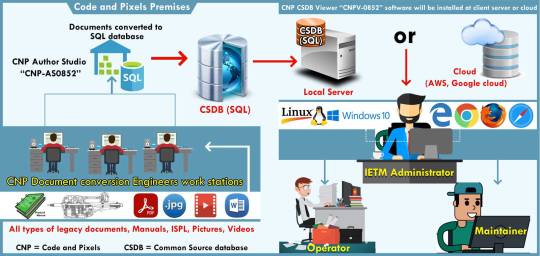
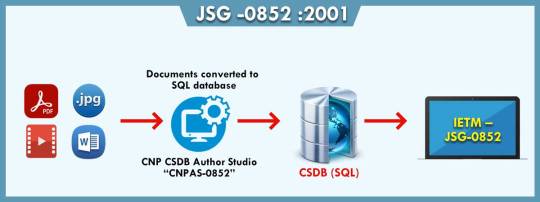
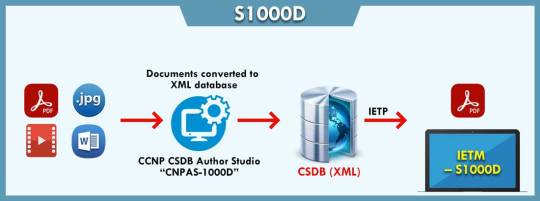
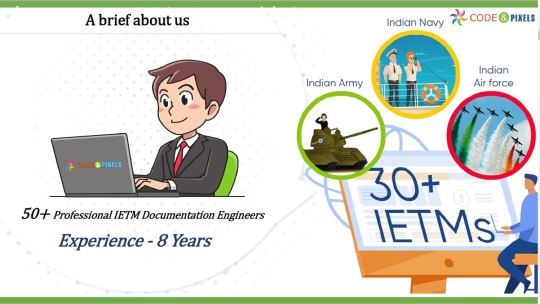
0 notes
